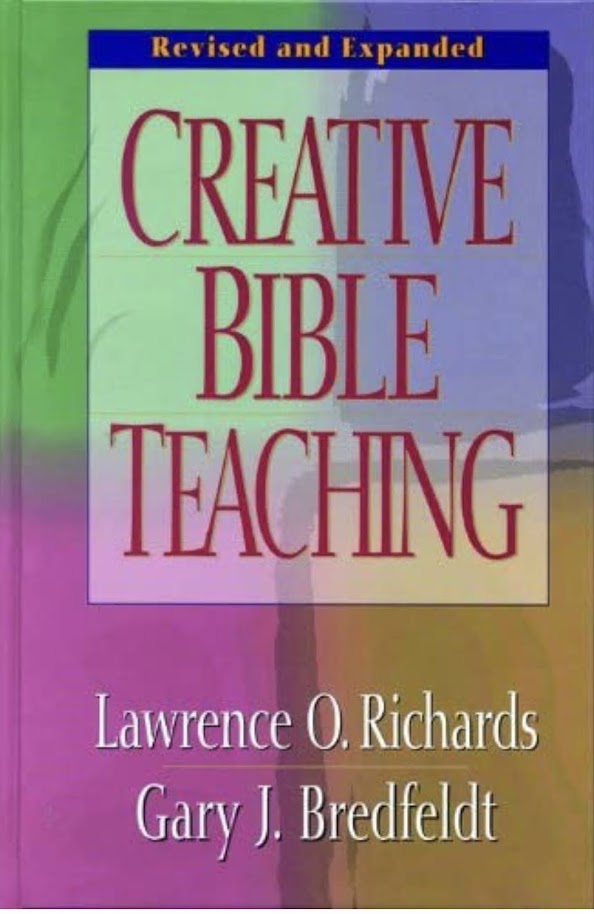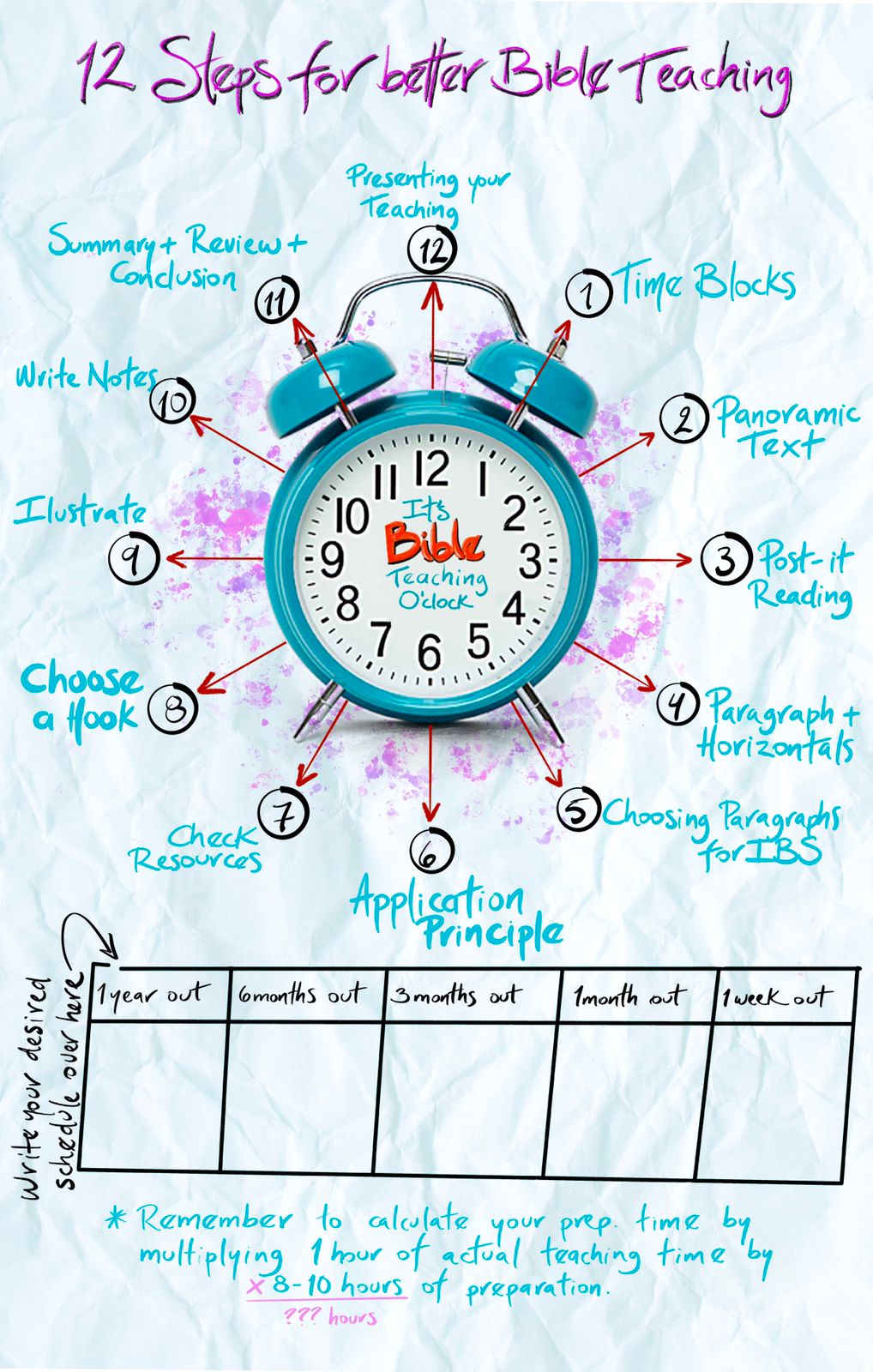
How to Teach:
 Most of the Church finds itself in a crisis of Bible illiteracy. The DBS worldwide wants to meet that need but now a new problem has risen: The need for Bible Teachers in the DBS schools. The BTS answers that call and the How to Teach – week will provide the skills necessary to empower and equip upcoming teachers to not only teach in context but with a methodology to prepare and present the Scriptures confidently and full of the Spirit! We will follow the same five practical steps as set out in “Creative Bible Teaching”, written by Lawrence O. Richards and Gary J. Bredfeldt:
Most of the Church finds itself in a crisis of Bible illiteracy. The DBS worldwide wants to meet that need but now a new problem has risen: The need for Bible Teachers in the DBS schools. The BTS answers that call and the How to Teach – week will provide the skills necessary to empower and equip upcoming teachers to not only teach in context but with a methodology to prepare and present the Scriptures confidently and full of the Spirit! We will follow the same five practical steps as set out in “Creative Bible Teaching”, written by Lawrence O. Richards and Gary J. Bredfeldt:
I: Study the Bible: Gathering information for context: survey method, book structure and text natural divisions or paragraphs. Getting in the text, reading to understand, identifying the main idea, asking the right questions to the text. How to make your book structure. Planning your study and preparation time and schedule up to the week of your teaching.
 II: Focus on the Message: How to research and choose what is relevant or important for the week. Recommended resources and process. Using the DBS teacher’s manual as the basis: topics to cover, main texts, character studies. Identifying main discipleship principles. Guiding the students through key and general observations, context, interpretation and application.
II: Focus on the Message: How to research and choose what is relevant or important for the week. Recommended resources and process. Using the DBS teacher’s manual as the basis: topics to cover, main texts, character studies. Identifying main discipleship principles. Guiding the students through key and general observations, context, interpretation and application.
III: Structure the Lesson: Steps to preparing a DBS lecture week, different styles of teaching notes. How to teach the class presentation methods, communication guidelines.
IV: Teach the Class: Teaching and presentation principles: Common practices of truly great Teachers. Teaching Effectiveness: Motivating the Learner: Using visual aids, videos, teaching tools, group discussions, handouts and activities for the different learning styles and settings.
V: Evaluate the results: Follow up and evaluation: teachers self-evaluation, students-teacher evaluation, DBS one on ones, small groups, feedback from students and staff, accountability, prayer and community. Passing the feedback on for improvement. Brainstorming together. Encouraging for continuous growth. Identifying and recruiting for future DBS staff/leaders. Talent is not enough: we need character.
Deep Bible Content:
THE BIG IDEAS
God as Creator, Father and King (metaphors of fatherhood, suzerainty)
The people of the ancient world were entirely polytheistic, believing in many gods and goddesses. These deities were characterized by power struggles between each other, while the role of humans was to appease them, sometimes to the extent of human sacrifice. Yahweh, the God of the Hebrew Bible, was distinctly different. He was the one Creator of the universe as well as all humans, and his relationship to humans was that of a Father to his children. A central metaphor for God was his kingship, often depicted as a divine Shepherd.
Humans as prodigal children (the fall, the flood, Babel, rebellion)
Early in the biblical story, the humans whom God created abused their freedom to rebel against him. What sometimes is called “the fall” was not a brief stumble, but a headlong plunge into violence and depravity. Even a watery flood of judgment did not alter the basic problem, and humans expressed their narcissism and self-worship epitomized in a great tower. Their rebellion knew no bounds, and it was prevalent even among the people of Israel, the ones God chose to be his special people. The nation of Israel and its unfaithfulness becomes a paradigm of all humans in all nations.
Chosen for service by grace (the election of Israel)
God’s solution to the human problem began with one man, Abraham, whom God chose as the ancestor of a chosen people. To this man God promised posterity and land, and most importantly, blessing for the whole human race. He chose the descendants of Jacob, Abraham’s grandson, to be his special people. He redeemed them from slavery in Egypt, gave them his instructions for life, and called them to serve as priests to the nations of the world. This gracious election set apart Israel as a holy example of wayward children, redeemed by love and called to serve.
Concept of covenant (Abraham, Moses, David, Jeremiah, and Ezekiel)
In the absence of international law, humans established and maintained their relationships with each other by covenants, binding agreements confirmed by oaths and attended by reprisals if they failed to keep their covenant promises. God used this well-known institution of covenant to relate to his people, beginning with Abraham, then Moses, and then David. At last, he offered the vision of a new covenant described by Jeremiah and Ezekiel. All these covenants were attended by divine promises: some had conditions that were temporal, and some had features that were to last forever.
Role of faith (even though they were under law, the people of Israel still were called to a relationship of faith)
Faith is not merely a matter of believing certain facts; it is a relationship of complete trust. This, ultimately, is what God, the Father, desired from his human children. The laws of the Torah—God’s instructions for living—were intended for guiding Israel toward a life of complete trust in Him. Waywardness was not merely a matter of breaking the rules, it was breaking a relationship with one’s Father. While faith and faithfulness were intended to be the hallmarks of God’s people Israel, mostly they failed to live a life of faith, and in the end only a remnant survived.
KEY CHARACTERS
Adam (the prototype failed human)
As the original human, Adam was the ancestor of all who followed him. In disobeying God, Adam was estranged from his true home. His descendants followed in kind, living lives of desperation, oppression, and violence. Adam became the prototype for humans in rebellion, alienated from God and alienated each other.
Abraham (the paradigm for faith and faithfulness)
Abraham was called by God to leave his home and go to a land that God would show him. He became the model for true faith and faithfulness, which is God’s call to forsake one’s natural home and way of life in order to receive a home and way of life from God’s hand. The greatest thing Abraham ever did was to believe in God’s promises.
Joseph (the model for forgiveness)
Disowned by his brothers and sold by them to slave-traders, Joseph still maintained a life of faithfulness to God. In time, God blessed Joseph and elevated him in Egypt. Eventually, he would have the opportunity to avenge himself of his brothers’ treachery, but instead, Joseph chose the high road of forgiveness.
Moses (the first pastor and lawgiver)
Born in slavery, Moses was called by God to lead forth the Israelites out of Egypt to Mt. Sinai, where they would become God’s holy people. For forty years, he served as their pastoral leader, mediating God’s instructions for life and leading them to the borders of the land God had promised to Abraham and his descendants.
Joshua (the faithful successor)
Transitions in leadership in the ancient world were often violent, but the transition from Moses to Joshua was a striking exception. The Spirit of Yahweh that was with Moses came to rest upon Joshua, enabling him to successfully lead the Israelites into the land of Canaan. Under his leadership, the Israelites remained faithful until he died.
Samuel (the model for faithful prophethood)
Samuel, the last of the judges, also served as a true prophet-leader. Though only a boy when called by God, he faithfully spoke the word of God to the Israelite nation, providing spiritual leadership in a world of many threats, both external and internal. He became the pivotal figure in helping the nation make the transition to a monarchy.
David (the great king)
Though Yahweh was the Great King of Israel, David, the man after God’s own heart, became God’s royal representative, if effect, a “son” of God. He rose to power during a dark period of internal instability and formidable threats from surrounding enemies, forming the weak clans of Israel into a united kingdom where God was the true center.
TYPE OF LITERATURE COVERED IN WEEK 1-4 OF A DBS
The literature of the Old Testament is of various kinds. The largest portion is historical narrative, where the stories reflect upon God’s expectations, explain how God’s people were blessed for trusting in Him, and shouting warnings to them about behaviors to avoid. However, there is also law, which comes in two forms, apodictic law (absolute law) and case law (conditional law). In addition, large portions of some books are written in Hebrew poetry, a style widely used in the ancient Near East. Finally, some texts, called Wisdom Literature, address subjects like suffering, sex, work, family, justice, society, and most importantly, whether or not there is a single purpose in human life.
CONTROVERSIAL ISSUES

You must be logged in to post a comment.